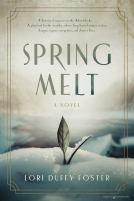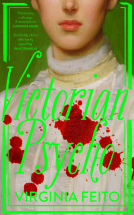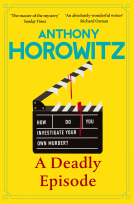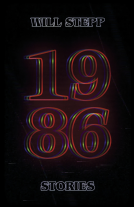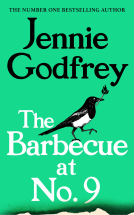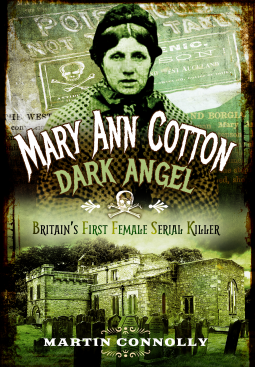
Mary Ann Cotton - Dark Angel
Britain’s First Female Serial Killer
by Martin Connolly
This title was previously available on NetGalley and is now archived.
Send NetGalley books directly to your Kindle or Kindle app
1
To read on a Kindle or Kindle app, please add kindle@netgalley.com as an approved email address to receive files in your Amazon account. Click here for step-by-step instructions.
2
Also find your Kindle email address within your Amazon account, and enter it here.
Pub Date 1 Sep 2016 | Archive Date 20 Sep 2016
Pen & Sword | Pen and Sword History
Description
With location photographs and a blow by blow account of the trial, this book challenges the claim that Mary Ann Cotton was the ‘The West Auckland Borgia’, a title given to her at the time. It sets out her life, trial, death and the aftermath and also questions the legal system used to convict her by looking at contemporary evidence from the time and offering another explanation for the deaths. The book also covers the lives of those left behind, including the daughter born to Mary Ann Cotton in Durham Goal.
A Note From the Publisher
Published to coinside with upcoming ITV drama 'Dark Angel' which is due to air in early autumn, this title is certain to receive plenty of media attention in the run up to publiction.
Available Editions
| EDITION | Paperback |
| ISBN | 9781473876200 |
| PRICE | £14.99 (GBP) |
Average rating from 20 members
Featured Reviews
 Fran E, Reviewer
Fran E, Reviewer
Mary Ann Cotton was born in South Hetton, England in 1832 to a mining family. Her father, a bound miner, was contracted for one year receiving a deplorable family dwelling and meager wages. Upon contract completion, a mining family was displaced unless the breadwinner renewed for the subsequent year. Miners were forced to work in dangerous, unhealthy mines that might flood or collapse.This miserable existence was further complicated by rampant diseases such as typhoid, cholera and gastric flu. It was no surprise that Mary Ann's father died in a mine shaft accident and the family lost their income and housing.
Leaving home at 16 years old, Mary secured a job as a nurse for mine owner Edward Potter. When the Potter children left for boarding school, Mary's taste of a rich lifestyle abruptly ended. Mary was determined, despite
her strict Methodist upbringing, to use her feminine wiles to find a rich husband. In this quest she married four times and had twelve or more children. Most suffered untimely deaths while Mary collected money from their life insurance policies. Were the deaths caused by disease, natural causes or the work of a murderer?
Thoroughly researched and meticulously presented one can view birth records, death certificates, and census records of Mary Cotton's various living arrangements. Author Martin Connolly makes the true crime story of "Mary Cotton-Dark Angel" come to life. The reader experiences the 1870's arrest, incarceration and murder trial of Mary Cotton. A fascinating, totally engrossing read.
Thank you Pen and Sword Publishing and Net Galley for the opportunity to read and review "Mary Ann Cotton-Dark Angel".
 Lynnette A, Reviewer
Lynnette A, Reviewer
Timed to coincide with the launch of new ITV television drama “Dark Angel” this book chronicles the life and times of Mary Ann Cotton, the first convicted female serial killer in England. I have to confess to being interested in this story on several different levels. Female serial killers are a rare beast so it is always interesting to find out a bit more about what made her tick and to speculate on why she set out on the path that she did. I also find it fascinating from a social history point of view as well. The mining community that she grew up in also housed a few of my husband’s ancestors. It would be interesting to know what they had thought about the celebrity in their midst.
The writing style will be fairly familiar to anyone who has ever done any family history research. Connolly has opted for a factual trip through the official documentation that proves various events in Mary Ann’s life. Beautifully illustrated by photos and maps of the local area he includes copies of local census entries and birth marriage and death records from the local Methodist churches. I originally had a digital copy of the book as my review copy from the publisher but ended up buying the printed version because of these superb photos and illustrations.
Connolly does take a very fair approach to the story refusing to speculate on what might have happened – leaving much of that to the excerpts from local newspapers etc. The inclusion of some of these sensationalist reports is interesting and gives you an idea of what Mary Ann was up against in her attempt to defend herself.
This was a time with high infant mortality and outbreaks of typhoid and cholera were frequent as well as the childhood diseases like measles and chicken pox. Any family history research in this area and at this time will reveal high numbers of children not making it to adulthood although in Mary Ann’s case it is particularly damning. A female thief with four husbands, a lover and over twelve children she was only arrested after the death of her step son. After this accusation other bodies were exhumed and the case against her began to build.
It is a fascinating story of the English legal system in the nineteenth century and indeed the tabloid style newspaper coverage that was clamouring for her head long before any conviction. This is a riveting read and one that will leave you with as many questions as there are answers.
Supplied by Net Galley and Pen and Sword in exchange for an honest review.
 Rosemarie C, Reviewer
Rosemarie C, Reviewer
Thoroughly researched, this book explores the life and times of Mary Ann Cotton, thief, bigamist and possibly a murderer. The evidence is explored and a different explanation, based on the evidence given at her trial, is put forward; that her victim, her seven year old step-son, was in fact the victim of green wallpaper and bug-killing soap used to wash the bed and walls. The exploration of the newspapers, and their influence on the outcome of the trial, and the formation of public opinion by sensational reporting was fascinating. Nothing changes. I enjoyed the social and judicial context provided in the narrative; understanding more of conditions in mining villages and the prejudices of small Victorian communities gives a better understanding of Mary Ann's behaviour.
This is very much a 'local history' book, written by someone living near to the last residence of Mary Ann Cotton. It doesn't have the gloss of a professional historian's work but it reads well, has adequate endnotes and a comprehensive bibliography.



